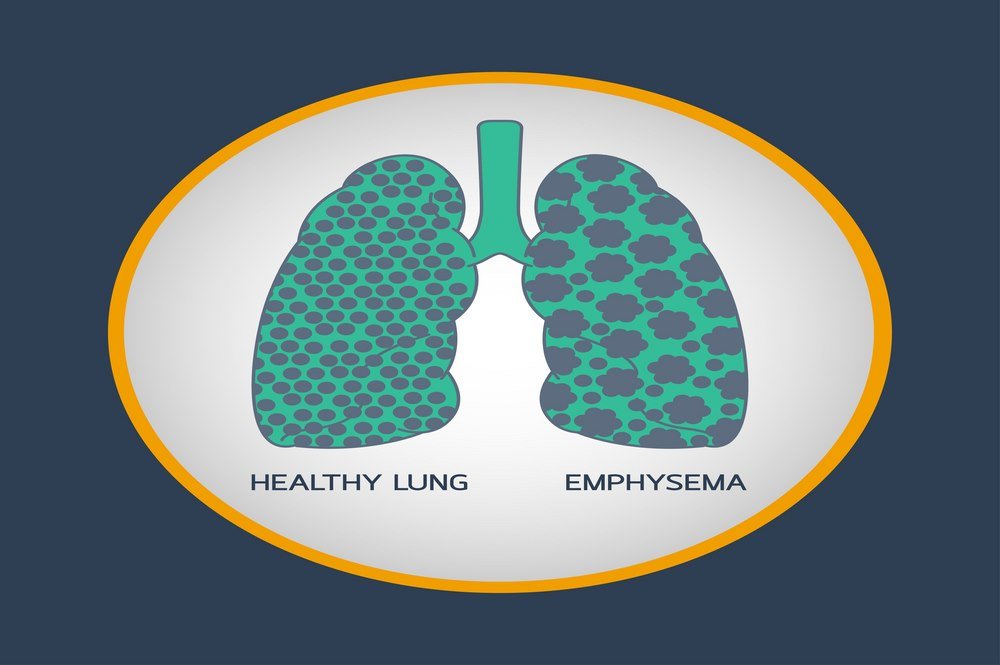Emphysema Pathophysiology

The smaller alveoli and the small distal air passages potentially affect by the disease, following by the effects in the larger airways of the lungs. Elastic recoil is typically responsible for splinting the bronchioles to open. However, the bronchioles in the patients with emphysema lose their elasticity and the stabilizing function. In addition, emphysema causes a collapse in the air passages which ultimately results in the gas to distally trap inside the lungs. The damage in lungs is due to an erosion in the alveolar septa resulting in the enlargement of the available air space in the alveoli. Furthermore, the oxidative resulting due to cigarette smoke inhalation can play a potential role in the development of emphysema. The major consequences of the oxidative stress involve the activation of a transcription factor, which activates pro-inflammatory cytokine transcription. [6]
There is sometimes a creation of bullae with their thin walls surrounding the damaging lung tissues with progressing emphysema. Smoking nicotine and other substances adds up to the development of the condition in the beginning by stimulating the inflammatory process. The inhalation of irritants causes inflammatory cells to release from the polymorphonuclear leukocytes. The alveolar macrophages and polymorphonuclear leukocytes release and move into the lungs. Proteolytic cells are types of inflammatory cells which the lungs usually use to protect against the actions of anti-proteases including the alpha-1 antitrypsin (AAT). Cigarette smoking promotes the secretion of pro-inflammatory cytokines by inhibiting the activity of histone deacetylase.
In addition, the irritating substances from smoking will have a direct effect on the alpha-1 antitrypsin (AAT) by minimizing its activity. Therefore, the condition of emphysema progresses in the condition when the activity and production of anti-protease are not enough to counter the dangerous effects of additional protease production. The minimal activity of alpha-1 antitrypsin results in the destruction of the alveolar walls and the breakdown of collagen and elastic tissues of lung tissues. The loss of alveolar muscles and the breakdown of alveolar walls lead to the reduction in the surface area in the air sacs for gas exchange. The reduction in surface area for gas exchange increases the rate of blood flow via the pulmonary capillary system. the inflammation and the oxidant injury contributes to the alveolar destruction.
The increase in the rate of blood flow through the pulmonary capillary system results in the cause of high blood pressure or hypertension in a lot of people as a severe complication of emphysema. Emphysema is one of the pathological conditions that the researchers define by permanent enlargement of air spaces distal to the terminal bronchioles. Emphysema leads to a dramatic decline in the surface area of the alveoli available for gas exchange. In addition, the loss of alveoli results in the airflow limitation by the following two mechanisms:
- At first, the loss of the alveolar walls leads to a decrease in the elastic recoil which ultimately results in the limitation of airflow
- Secondly, the loss of alveolar structures that support the breathing leads to the narrowing of the airway which limits the airflow even more
